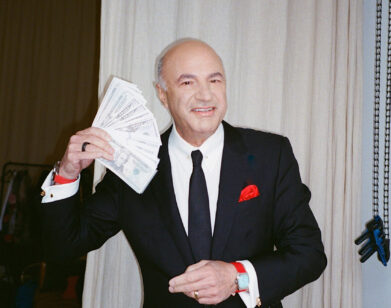Philip Hook Explains It All

ABOVE: PHILIP HOOK
A is for authenticity, B is for branding, C is for color, D is for dealers, and E is for… eroticism? For Sotheby’s art specialist Philip Hook, these terms are part of the daily vernacular.
In his newest book, Breakfast at Sotheby’s, Hook takes us on a witty journey through the wonderfully tumultuous world of art dealers and markets—organized in the style of a dictionary, complete with a glossary—enlightening readers on how works of art are given financial value. It’s also full of juicy behind-the-scenes tidbits from one of the top auction houses in the world—a notable excerpt describes the nerve-wracking process of preparing Edvard Munch’s The Scream for public auction back in 2012.
“It was definitely a book that I very much enjoyed writing, because I was able to put in a whole lot of varied experiences that happened to me and things that I observed in the art world,” he says. “It was a real labor of love to put it all together. It dwells on that fascinating relationship between art and money, which I find utterly riveting.”
If anyone’s qualified to write the book, it’s certainly Hook. With nearly 40 years of experience in the art market world, he graduated from the University of Cambridge with a degree in the history of art before joining the revered Sotheby’s in 1994, where he currently serves as a director and senior paintings specialist. He can also regularly be seen on BBC’s cult television program Antiques Roadshow as an art expert.
“I’ve spent two happy decades working for Sotheby’s, and I should point out that the conclusions I draw in this book are actually my own and not necessarily the views of my long-suffering employers,” he says wryly. “There’s a certain amount of being discreet, but I think I managed to achieve a balance—being irreverent without upsetting too many people.”
The book is divided into five sections—”Artist and His Hinterland,” “Subject and Style,” “Wall-Power,” “Provenance,” and “Market Weather”—with each touching upon factors that can add or decrease the value of a work of art. Some categories are familiar (landscapes, animals), while others a bit more surprising (spoofs, railways). One particular category, which tracks the financial parallel between world-record auction prices for paintings and the highest-ever transfer fees paid for international footballers, is especially humorous and insightful. (“It’s an odd parallel, but it’s an interesting correlation,” the Chelsea F.C. supporter says.)
“I hope that people will take away a feeling that ultimately there is some rationale to the way the art market judges art,” he says. “To some degree, I think the art market does have its values just about right in a rather quirky way.”
As for Hook, who frequently interacts with some of the best works of art in the world—if he could curate his own art collection with money being no object, what would he choose?
“I would love to own and live with a great work by [Edgar] Degas,” he says after a moment of contemplation. “I’m also very, very fascinated by the romanticism of [Théodore] Géricault. And if I had to take one old master, it might be a work by Pieter Bruegel [the Elder]. So I’m choosing three. Can you arrange for it to happen, please?”
Your move, Louvre.
BREAKFAST AT SOTHEBY’S IS OUT TOMORROW, OCTOBER 2, FROM OVERLOOK PRESS. BUY IT HERE.






